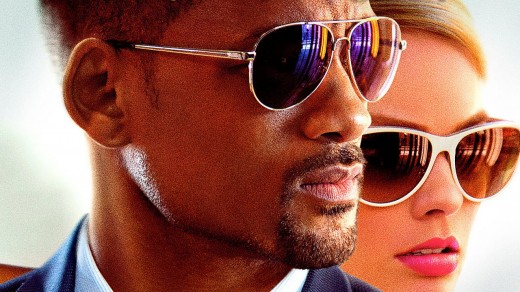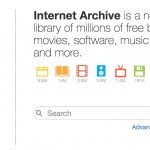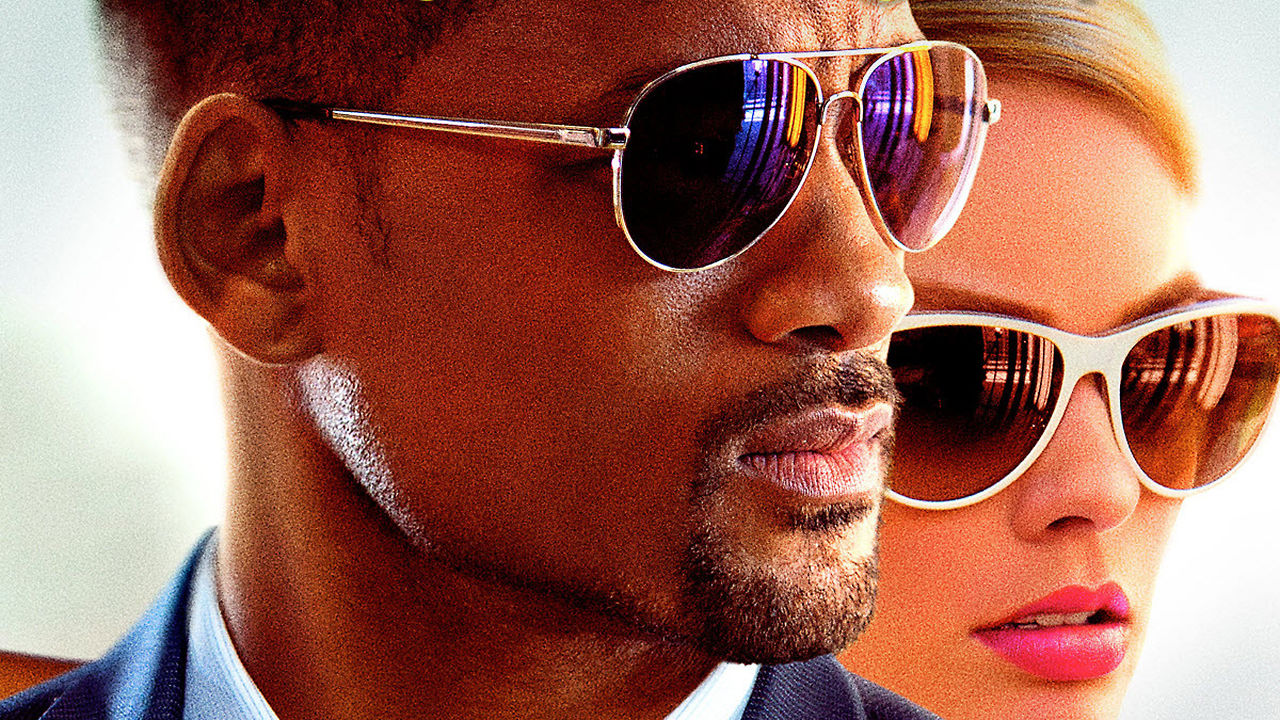The closing Taboo: Will Smith, “center of attention,” And Hollywood’s Interracial Couples problem
With love hobby Margot Robbie, Smith’s persona embraces a colorblind romance in a mainstream film. but is it sufficient?
March 2, 2015
Will Smith has already saved the sector.
but in a roundabout way that would possibly no longer be his greatest on-screen accomplishment. Now he’s poised to resolve what is arguably Hollywood’s closing taboo: interracial couples.
it’s essential say that Smith has additionally already bridged the hole between black and white audiences. As one of Hollywood’s most bankable actors, Smith has starred in one of the crucial greatest blockbusters which were marketed and watched on a universal level—nobody would call the men in Black franchise or Independence Day “black” movies. but there’s something deeper at play in Smith’s physique of labor, and that is the difficulty of on-reveal, interracial romances.
Over the course of his career, Smith’s top women have inched closer to the Caucasian finish of the race spectrum. that is a continuum that starts with Eva Mendes in 2005’s rom-com Hitch and culminates in his latest film, with Margot Robbie within the just lately released focal point. within the movie, Smith performs Nicky, the chief of a band of criminals who takes Jess (Robbie) below his wing as his new protégée. A romance speedy sparks that complicates what will be the biggest heist of Nicky’s career.
First let’s get this out of the best way: focus, as a complete, is passable. Smith charms his means via every other semi-complicated role and Robbie manages to give some semblance of depth to the “hot, blonde” archetype. however it’s the whole-on love affair (sex scenes included) that deserves a better seem to be, most significantly for the fact that race isn’t talked about once within the movie—Nicky and Jess’s romance is colorblind.
To be mindful the modern implications of center of attention and Smith’s part in “normalizing” interracial couplings in mainstream films, now we have to return to 2005 when an extraordinarily candid Smith spoke out about Hollywood’s delicate dance on racial lines.
“there may be form of an universal fable that when you’ve got two black actors, a male and a feminine, within the lead of a romantic comedy, that individuals around the world don’t wish to see it.”
all through a press tour for Hitch, Smith dropped this salient, if miserable, fact to the U.k. newspaper Birmingham submit about casting Eva Mendes, who is Cuban-American, within the lead position for the film. “We spend $50 something million making this movie and the studio would think that used to be difficult on their funding. So the theory of a black actor and a white actress comes up—that’ll work around the globe, but it’s an issue in the U.S.”
Hollywood, after all, has a messy historical past of racial depictions on-reveal (even ahead of long past With the Wind), let by myself interracial couples. If it’s now not an issue of painful stereotypes, it’s a plot that’s utterly contingent upon two lovers overcoming the insurmountable main issue of being from totally different “worlds.”
“It’s an economic difficulty in that a lot of occasions Hollywood movies are created for the highest selection of target market members,” says Nadia Ramoutar, digital film professor on the artwork Institute of Jacksonville. “There are still individuals who object to interracial relationships, therefore interracial relationships are still used as a battle instrument throughout the story.”
Ramoutar authored a 2006 find out about analyzing Hollywood’s therapy of interracial couples in 15 prime-grossing field administrative center motion pictures each 12 months from 1967 to 2005. She found that relationships between men and women of different races in these movies were likely to be quick-lived or result in catastrophe.
Ramoutar says that, “We’re nonetheless getting the message of, ‘if you would simply stay with your individual individuals, it might indisputably be quite a bit more straightforward. for those who go outside of your race, you must expect issues and isn’t love drawback enough without that?’”
for the reason that wager Who’s Coming to Dinner in 1967, a roughly ground zero for on-display black and white couples, Hollywood has fumbled with motion pictures like keep the ultimate Dance, The Bodyguard, Monster’s Ball, and Lakeview Terrace. although a few of those movies are field place of business and crucial hits, it’s exhausting to fail to remember the use of race as a component for melodramatic stress in a relationship—that is, if a relationship types in any respect. prior to Robbie in focal point, there was Charlize Theron in Hancock. There’s a connection and very lengthy history between Smith and Theron’s characters however in spite of everything, it’s decided the two are aside.
Hollywood, it appears, has been keen to flirt with the theory of a colorblind, black and white couple but infrequently commits.
“The Hollywood portrayal of interracial relationships is so uncommon and when it does happen it’s on a regular basis in any such minor means or there’s some bad final result,” Ramoutar says. “movie is a type of cultural transmission—what we imagine to be beautiful, what we believe to achieve success, those are all things which are transmitted via movie and we’re transmitting that message to the next era of individuals.”
And what’s being handed down from the reveal to society will also be extra damaging than you suppose.
A 2013 Gallup ballot found 87% of usa citizens say they’re in want of black and white marriages. alternatively, phrases appear to move faster than actions because in keeping with the newest census information, interracial, opposite-intercourse couples make up one in 10 marriages within the U.S.—a 28% elevate considering the fact that 2000, indeed—then again, while you parse out the data, unions between black and white couples are among the many lowest (7.9%), and are some distance behind white and Hispanic couples (37.6%).
If there’s such excessive approval charges for black and white marriages, why haven’t we viewed more of them?
“In the us there’s important racial prejudice and that performs out, now not relatively, in courting preferences,” says Erica Chito Childs, an creator and a sociology professor at Hunter college. “probably the most causes I take a look at relationship and marriage preferences is that it’s one area the place that you would be able to nonetheless uncover underlying prejudices and racism. We’ve learned as a society that individuals are very politically right in what they say, but when you begin asking people about who they’ll date or marry or who they need their children to marry, it comes out.”
Such dire charges of interracial marriages between blacks and whites largely stems from compounded pressures from outside society and inside of household. In Childs’s research, white adult males, particularly of school age, were fast to exclude black girls from doable relationships in line with the assumption they might have nothing in fashionable.
“If your own preference excludes a whole staff it’s now not a private desire—it’s, on the very least, a racial prejudice,” Childs says. “sometimes individuals think interracial marriage is so much extra standard as a result of they see interracial couples but there is a difference. when you’re relationship it’s extra of an individual option—people are more open-minded in terms of courting as a result of it’s possible you’ll date completely different individuals that you would by no means marry. however marriage includes households. It’s no longer that necessarily the connection wouldn’t work, it’s the surface pressures from both sides relating to domestic expectations.”
tv displays, ads, and movie often mirror the dominant societal views—however it’s a improper cycle: These industries continue to churn out what they believe the public needs, namely whites with whites, and blacks with blacks. Backlash regularly comes with on-reveal interracial coupling (two phrases: Cheerios commercial) however the finish purpose for substantive range shouldn’t be clouded via a relatively bigoted existing.
“You don’t hear complaints about representations of white people on tv partly as a result of which you could’t in reality stereotype a white individual on television—white people have all kinds of roles: They’re the happily married couple, they’re the criminals, they’re the law enforcement officials. There’s a wide range,” Childs says. “It’s not about limiting representations and pronouncing ‘this workforce must simplest be portrayed this fashion’—it’s that there are still so few interracial couples on-reveal that the way they’re represented then becomes consultant as how interracial relationships are. we need more variety so that after we see an interracial couple and they have a foul relationship it doesn’t indicate that interracial couples are dangerous.”
alternatively, as Childs continues, “it’s important to think about not just the truth that any person’s paired reverse however what’s the meaning of the relationship? How does the connection end?”
The heist went incorrect.
someplace along the best way, Nicky’s rip-off goes sour and no longer only his life is at risk, but Jess’s as well. with a view to retailer her, Nicky begins to break his personal cardinal rule of all the time staying in personality—”you die with the lie.” with the aid of coming smooth, or at least trying to, Nicky proves he truly does love Jess and they hobble off into the distance (towards a sanatorium) collectively.
An unconventional finish to a romance, yes, however they do wind up collectively.
For whatever flaws it has—an improbable ending that entails an extraordinarily precisely placed bullet, Jess’ anti-climatic reason behind dating Nicky’s goal— center of attention’s fully realized interracial, colorblind coupling sets a brand new usual in Hollywood. And audiences are cool with it: focal point dominated its premiere weekend box place of job, pulling in $19.1 million, good for the top spot.

“We wish to begin giving the audience slightly extra credit,” says Andrew Weaver, telecommunications professor at Indiana college. “What I’ve been finding is that people like a just right story and characters that they are able to determine with and race isn’t an obstacle.”
Weaver has authored a collection of research looking on the factors in the back of why white individuals are much less prone to watch motion pictures with a predominantly black cast. What he discovered is how the movie is marketed makes all of the difference. In his latest scan, Weaver created an IMDb-like page for a faux film with a plot discrete from race. He also included a Twitter feed on the same web page with pretend tweets from individuals who attended a complicated screening. all the forged photos and Twitter profile photos had been interchangeable as a way to gauge totally different reactions from topics.
“when you had a white target audience speaking about the film then the race of the characters didn’t subject—it’s in reality pushed by way of how the flicks are marketed,” Weaver concludes. “If it’s a advertising and marketing difficulty then it’s one thing that can be overcome. There’s a technique that even though you might have a black cast, then which you could draw a white target audience for those who pitch this movie in the fitting method.”
So precisely how integral is an actor like Smith to the marketability of a racially divisive movie? not a lot, as Weaver sees it.
“Will Smith is common for a similar causes that any actor or actress is standard: He’s excellent-taking a look, he’s charismatic, he’s an excellent actor,” he says. “It’s no longer about being a crossover celebrity, it’s about being a celeb and white audiences like black audiences are in a position to love, establish with, and relish actors of all races. but it’s important to supply them a chance.”
quick company , read Full Story
(245)














